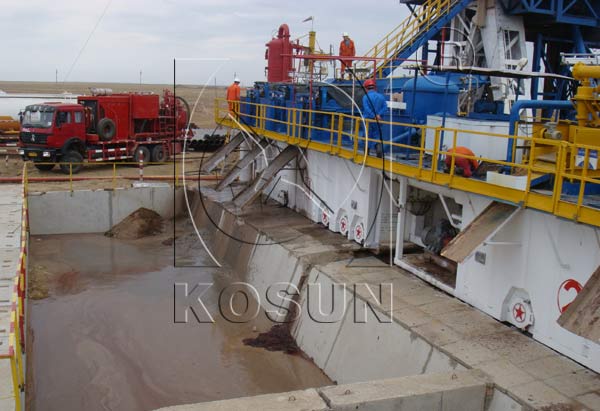The drilling fluid works and main functions
2013-06-13
Drilling deeper, longer and more challenging wells has been made possible by improvements in drilling technologies, including more efficient and effective drilling fluids. Drilling fluids, also referred to as drilling mud, are added to the wellbore to facilitate the drilling process by suspending cuttings, controlling pressure, stabilizing exposed rock, providing buoyancy, and cooling and lubricating. As early as the third century BC, the Chinese were using drilling fluids, in the form of water, to help permeate the ground when drilling for hydrocarbons. The term "mud" was coined when at Spindletop in the US, drillers ran a herd of cattle through a watered-down field and used the resulting mud to lubricate the drill. While the technology and chemistry of drilling fluids have become much more complex, the concept has remained the same.

Drilling fluids are essential to drilling success, both maximizing recovery and minimizing the amount of time it takes to achieve first oil. Purposes Of Drilling Fluid During drilling, cuttings are obviously created, but they do not usually pose a problem until drilling stops because a drillbit requires replacement or another problem. When this happens, and drilling fluids are not used, the cuttings then fill the hole again. Drilling fluids are used as a suspension tool to keep this from happening. The viscosity of the drilling fluid increases when movement decreases, allowing the fluid to have a liquid consistency when drilling is occurring and then turn into a more solid substance when drilling has stopped. Cuttings are then suspended in the well until the drill is again inserted. This gel-like substance then transforms again into a liquid when drilling starts back up. Drilling fluids also help to control pressure in a well by offsetting the pressure of the hydrocarbons and the rock formations. Weighing agents are added to the drilling fluids to increase its density and, therefore, its pressure on the walls of the well.
Another important function of drilling fluids is rock stabilization. Special additives are used to ensure that the drilling fluid is not absorbed by the rock formation in the well and that the pores of the rock formation are not clogged. The longer the well, the more drill pipe is needed to drill the well. This amount of drill pipe gets heavy, and the drilling fluid adds buoyancy, reducing stress. Additionally, drilling fluid helps to reduce friction with the rock formation, reducing heat. This lubrication and cooling helps to prolong the life of the drillbit.
Kazakhstan Kosun Services Co., Ltd. is a wholly-owned subsidiary of Xi’an Kosun Machinery Manufacturing Co., Ltd. in Aktobe, Kazakhstan, which is mainly engaged in technical services and product sales of both solids control equipment and drilling fluid cleaning equipment in Kazakhstan, and is capable to produce the following equipment and provide their technical maintenance: mud cleaner, various tanks, camps, shale shaker, vacuum degasser, desander, desilter,decanter centrifuge and sand pump, etc.
News
- 07-11Technical features of using KOSUN drilling waste mud treatment system
- 07-07Main equipment of solids control system in drilling
- 06-26Geothermal well mud treatment system manufacturer—KOSUN solid control
- 06-26The key to achieving mud zero discharge is on-site processing after solid-liquid separation
- 05-10Application Scenarios of KOSUN Drilling Waste Treatment Equipment
- 05-10Environmental protection new regulations require to achieve zero discharge of drilling waste
- 05-09KOSUN Solid-liquid Separation Equipment is used in the construction industry
- 04-19What are the main functions of the Mud Agitator during use?
- 04-15The Advantages of KOSUN's trenchless horizontal directional crossing mud recovery system
- 03-15Vacuum degasser is mainly divided into centrifugal degasser and jet degasser




